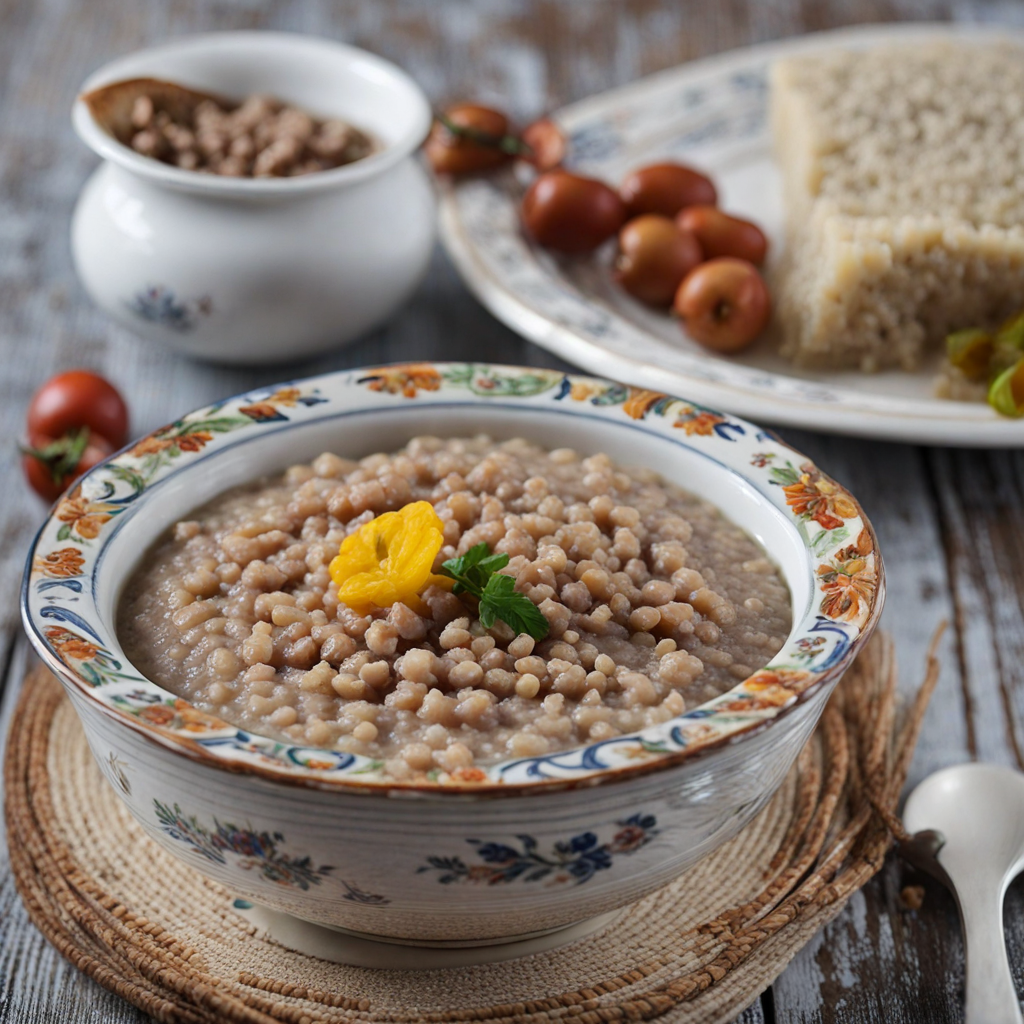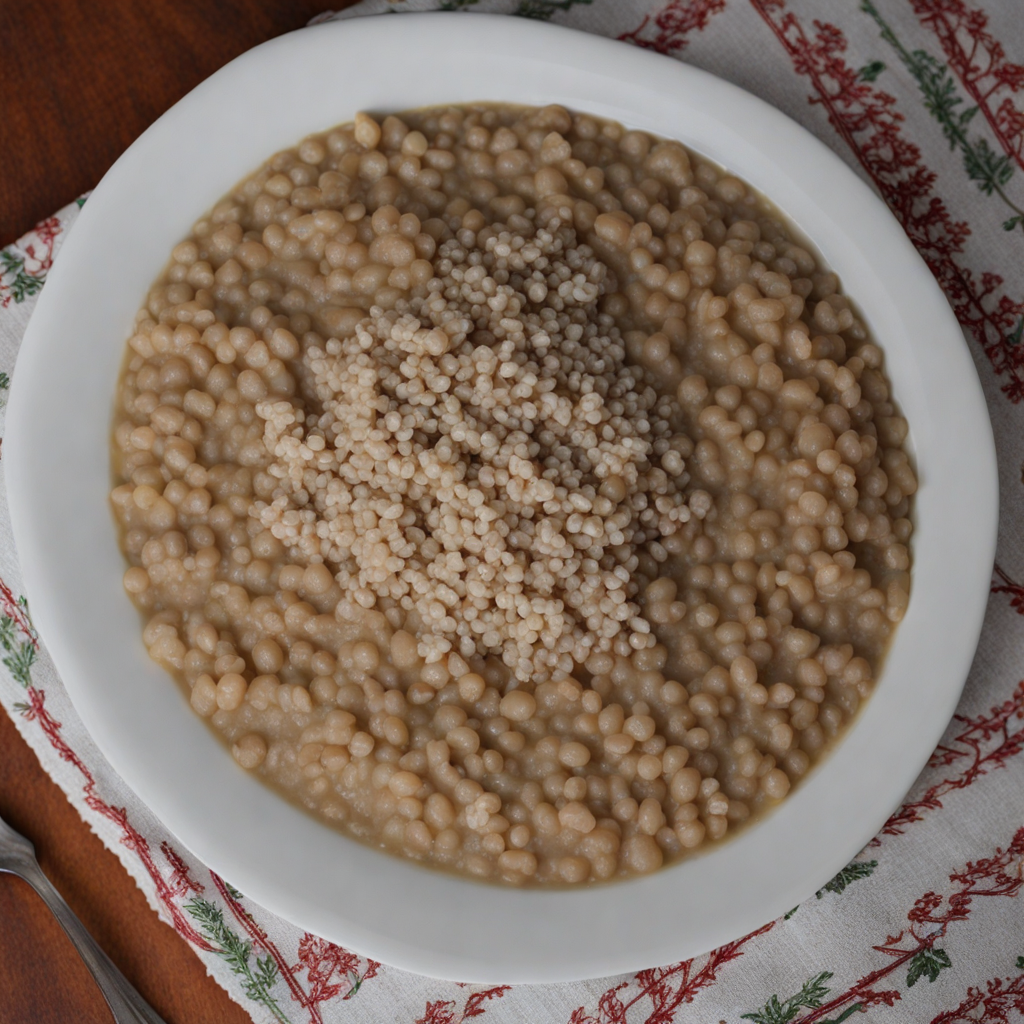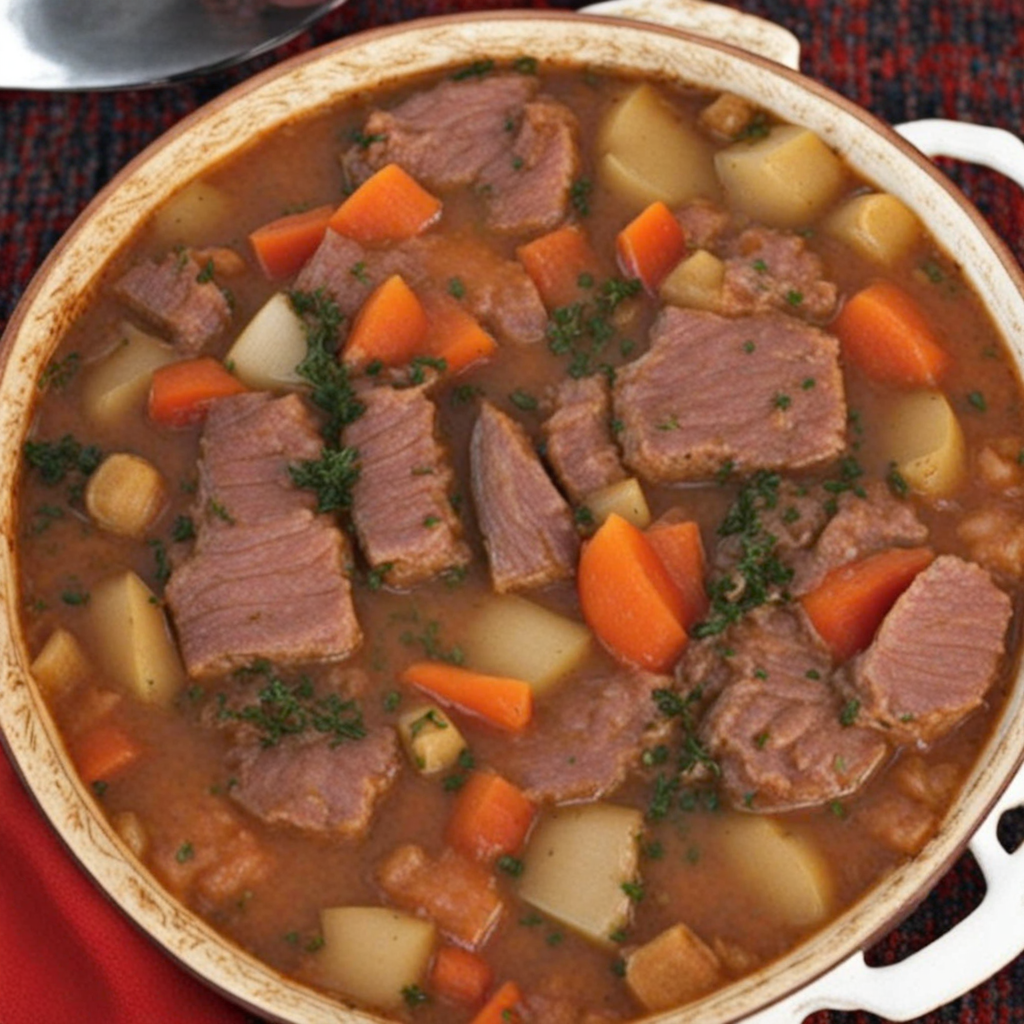Ajdova Kaša
Ajdova Kaša, or buckwheat porridge, is a traditional dish from Bosnia and Herzegovina that embodies the rustic charm of Balkan cuisine. Made primarily from roasted buckwheat groats, it offers a unique, nutty flavor that sets it apart from more common grains. The preparation of Ajdova Kaša typically involves simmering the groats in water or broth until they reach a creamy consistency, resulting in a hearty and comforting dish that is both filling and nutritious. The earthy tones of the buckwheat are often complemented by the addition of sautéed onions, garlic, and sometimes even mushrooms, enhancing its depth of flavor. As with many traditional dishes, variations abound, and Ajdova Kaša can be tailored to suit individual tastes. Some recipes incorporate fresh herbs such as parsley or chives, providing a bright, fresh contrast to the rich, toasty notes of the buckwheat. In certain regions, it is common to serve the porridge alongside grilled meats or stews, creating a satisfying combination that highlights the dish's versatility. Alternatively, it can be enjoyed as a standalone meal, perhaps drizzled with a bit of olive oil or topped with a dollop of sour cream for an added layer of richness. The experience of tasting Ajdova Kaša is one that transports you to the heart of Bosnia and Herzegovina, where the simplicity of the ingredients and the method of preparation reflect the country’s agricultural roots. Each bite offers a warm embrace, making it a cherished comfort food for many. Whether you are a seasoned food enthusiast or a curious newcomer, Ajdova Kaša promises to delight your palate with its wholesome flavors and inviting textures.
How It Became This Dish
The History of Ајдова Каша: A Culinary Treasure of Bosnia and Herzegovina #### Origins Ајдова каша, or "Ajdova Kaša," is a traditional dish that encapsulates the rich gastronomic heritage of Bosnia and Herzegovina. Its name derives from the Slavic word "ajda," meaning "plantain" or "herb," which refers to the plant known as "dandelion" that plays a significant role in its preparation. This dish is primarily composed of a grain base, typically using barley or cornmeal, combined with sautéed onions, herbs, and sometimes pulses. The dish's roots can be traced back to the rural kitchens of the region, where food was primarily cultivated and prepared based on seasonal availability and local agricultural practices. Ajdova Kaša is often associated with the culinary traditions of the Bosnian countryside. The dish's simplicity reflects the peasant origins of many Bosnian meals, where the necessity of using locally sourced ingredients shaped the culinary landscape. In a region rich in natural resources, grains, herbs, and wild plants, Ajdova Kaša became a staple among both the impoverished and the affluent, adapting to various palates while retaining its core essence. #### Cultural Significance Ajdova Kaša is more than just a dish; it is a symbol of resilience and resourcefulness, embodying the spirit of Bosnian culture. Traditionally, it was served during harvest festivals and community gatherings, signifying abundance and gratitude for the land's generosity. The dish is often enjoyed with yogurt or sour cream, which adds a creamy texture and balances the dish’s earthy flavors. The preparation of Ajdova Kaša is often a communal affair, with families and friends coming together to prepare, cook, and share the meal. This communal aspect highlights the importance of food in fostering social bonds and cultural identity. In Bosnian culture, food is not merely sustenance but a means of expressing love, hospitality, and tradition. Ajdova Kaša, with its humble ingredients and heartwarming flavor, serves as a reminder of the close-knit relationships that form around the dining table. #### Development Over Time As Bosnia and Herzegovina has undergone significant historical changes—from Ottoman rule to Yugoslav socialism and the post-war era—the evolution of Ajdova Kaša reflects the broader socio-political landscape of the region. The dish has remained a staple through times of adversity, adapting to the changing tastes and food practices of the population. During the Ottoman Empire's rule in the 15th century, the introduction of new spices and ingredients began to influence Bosnian cuisine. Although Ajdova Kaša remained primarily a rustic dish, the incorporation of spices such as paprika and black pepper became more common, enhancing its flavor profile. The Ottoman culinary legacy brought a myriad of cooking techniques and flavors that enriched the local cuisine, yet Ajdova Kaša retained its traditional roots. In the 20th century, the rise of industrialization and urbanization in Bosnia and Herzegovina led to changes in dietary habits. With more people moving to urban areas, traditional farming practices diminished, and processed foods became more prevalent. However, Ajdova Kaša persisted as a beloved dish, often prepared by those who yearned for the taste of home and nostalgia, serving as a bridge between past and present culinary traditions. The post-war era, following the devastating conflicts of the 1990s, saw a revival of interest in traditional foods as a way to reconnect with cultural identity. Communities began to embrace their culinary heritage, and Ajdova Kaša emerged as a symbol of resilience. Local food festivals and cultural events began to celebrate traditional dishes, and Ajdova Kaša found its place on menus in restaurants seeking to showcase authentic Bosnian cuisine. #### Modern Interpretations and Global Recognition Today, Ajdova Kaša is experiencing a renaissance, both within Bosnia and Herzegovina and beyond. Chefs and home cooks alike are experimenting with the dish, introducing new ingredients while honoring its traditional essence. Variations may include different grains or the addition of vegetables, meats, or even nuts to enhance texture and flavor. These modern interpretations not only cater to contemporary palates but also create a dialogue between tradition and innovation. The global food movement has also contributed to Ajdova Kaša's recognition on the international stage. As food enthusiasts seek authentic, regional dishes, Ajdova Kaša is gaining attention as a part of the rich tapestry of Balkan cuisine. Food bloggers and travel writers often highlight the dish in their narratives, painting a picture of Bosnia and Herzegovina's culinary landscape and inviting people to experience its flavors firsthand. Moreover, the dish has become a point of pride for many Bosnians, both at home and in the diaspora. Social media platforms are filled with images of lovingly prepared Ajdova Kaša, connecting individuals to their heritage and fostering a sense of community among those who share a love for this traditional food. It has become a way for Bosnians abroad to maintain their cultural ties and pass down culinary practices to the next generation. #### Conclusion Ajdova Kaša stands as a testament to the enduring nature of traditional foods and their ability to adapt over time. Rooted in the agricultural practices of Bosnia and Herzegovina, this dish encapsulates the region's history, culture, and resilience. As it continues to evolve and gain recognition, Ajdova Kaša remains a beloved symbol of Bosnian identity, connecting generations through shared flavors and memories. Whether enjoyed in a rural household or a modern restaurant, Ajdova Kaša is not just a meal; it is a narrative of a people, a land, and a culinary tradition that has withstood the test of time.
You may like
Discover local flavors from Bosnia And Herzegovina







